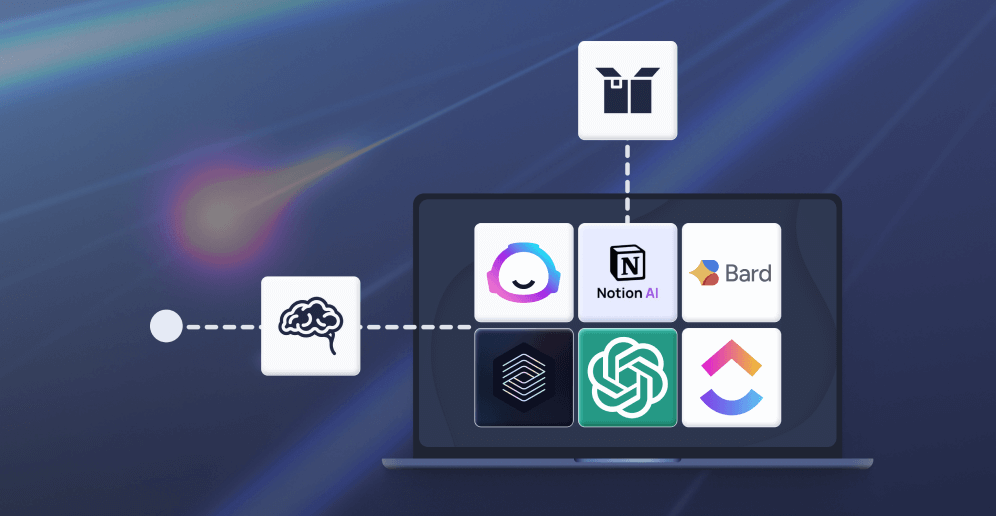A cyberattack occurs every 39 seconds. Is the government finally equipped to fight back?
A cyberattack occurs every 39 seconds. Is the government finally equipped to fight back?


A version of this article appeared in VMblog. It has been updated and syndicated here.
It seems that no matter how many Cybersecurity Awareness Months roll by, how many elite security professionals are parachuted in, or how much money is lost into a black hole, the issue of big data breaches just gets worse year-on-year. They’re so regular that they barely make the mainstream news these days, short of them being catastrophic. In 2020, more than 36 billion records were exposed in malicious cyberattacks, and we lay in wait to see how many will be harvested in 2021.
Threat actors are constantly scanning for opportunities, and while not every attack is a disaster, they occur on average, every 39 seconds. We’re not even close to winning the fight, and the bad guys have a huge advantage over the defenders of our data.
However, it seems change is in the air, with the Biden administration making cybersecurity an early priority in his term, to the tune of an extra US $10B in funding. This is, without question, a step in the right direction, but will this actually make a dent in cybercrime that is escalating in frequency and sophistication?
Cyber threats will take a (global) village to solve
Effective defense against increasingly potent cyberattacks cannot be the remit of just a handful of countries, and unfortunately, a cohesive strategy has been lacking across the board for a long time. However, with nation-state threats on the rise, many governments are sitting up and taking notice.
The SolarWinds attack affecting the US government was a clear warning of what is possible, and an indicator of the potential devastation if any critical infrastructure was breached. Recently, the FBI issued a warning that a Florida water system was attacked, with the threat actor able to contaminate the water supply remotely. They were stopped before serious damage was realized, but a more advanced attacker could have caused destruction on a massive scale that would put lives at risk.
Slowly, but surely, governments around the world are investing more in cyber defense. The UK made record investments in the cybersecurity sector, and established a new task force. Australia beefed up its cybersecurity strategy (especially for infrastructure), and places like Israel and Denmark are considered best-in-class for their cyber programs. Japan is ranked fifth in cyber defense; a welcome vote of confidence following a 2018 statement from then-Minister for Cybersecurity Yoshitaka Sakurada that he’d never used a computer. A recent announcement from the Singapore government pledged a $50 million investment in AI and cybersecurity research in future communications infrastructure, a forward-thinking move to solidify digital safety and integrity.
A strong, coordinated global cybersecurity response is vital as we rapidly progress into future tech, and every government body should illuminate it as a key focus.
More money doesn’t mean fewer problems
If we take the United States, United Kingdom, and Australia as examples, all of whom increased investment in government-led cybersecurity and expertise in the past couple of years, it may seem as though security is finally a priority, and the “good guys” are getting what they need to win the battle.
It certainly helps, but it’s only part of the bigger picture. That funding can buy super teams of experts (as has happened with Biden’s cash injection), comprehensive bug-bounty programs, and top-notch incident response and mitigation in the event of disastrous breaches, and it’s this approach to cyber defense that ensures we’ll still make minimal progress, no matter how much money is thrown at task forces and threat response.
Every government needs to look beyond reactive security measures, and sink some serious effort (and funding) into a more preventative strategy. If the focus remains on reacting to successful cyberattacks instead of working to prevent them in the first place, no amount of money will drive down growing risk. A genuine, proactive security approach would see budget allocated to infrastructure hardening, and rolling out effective security training and upskilling with the aim of reducing the attack surface as much as possible right from the start.
The cybersecurity skills gap may never close, but there is wasted potential
Highly trained, specialist security personnel are in huge demand all over the world, and it’s unlikely we will ever see a glut of those cyber gurus. However, this is all the more reason for governments and organizations alike to start getting creative, and savvier with the resources at their disposal.
A truly preventative approach to cyber defense starts with every person involved in the software development and infrastructure process being as security-aware as possible for their role. Developers, in particular, need the right security upskilling and right-fit tools for the job, so that secure coding can be intrinsic to their process. This goes a long way in ensuring that common vulnerabilities can be addressed before they ever see the light of day. This alone is a powerful - not to mention cheaper - step that reduces pressure and rework further down the software development lifecycle.
We need to reinforce a human-led approach to cybersecurity best practices, and it’s going to get better results than a heavy reliance on automation, tools, and reaction to problems that have already been embedded and discovered - a strategy that is clearly not working if we look at the number of breaches happening today.
Dive into onto our latest secure coding insights on the blog.
Our extensive resource library aims to empower the human approach to secure coding upskilling.
Get the latest research on developer-driven security
Our extensive resource library is full of helpful resources from whitepapers to webinars to get you started with developer-driven secure coding. Explore it now.
A cyberattack occurs every 39 seconds. Is the government finally equipped to fight back?

A version of this article appeared in VMblog. It has been updated and syndicated here.
It seems that no matter how many Cybersecurity Awareness Months roll by, how many elite security professionals are parachuted in, or how much money is lost into a black hole, the issue of big data breaches just gets worse year-on-year. They’re so regular that they barely make the mainstream news these days, short of them being catastrophic. In 2020, more than 36 billion records were exposed in malicious cyberattacks, and we lay in wait to see how many will be harvested in 2021.
Threat actors are constantly scanning for opportunities, and while not every attack is a disaster, they occur on average, every 39 seconds. We’re not even close to winning the fight, and the bad guys have a huge advantage over the defenders of our data.
However, it seems change is in the air, with the Biden administration making cybersecurity an early priority in his term, to the tune of an extra US $10B in funding. This is, without question, a step in the right direction, but will this actually make a dent in cybercrime that is escalating in frequency and sophistication?
Cyber threats will take a (global) village to solve
Effective defense against increasingly potent cyberattacks cannot be the remit of just a handful of countries, and unfortunately, a cohesive strategy has been lacking across the board for a long time. However, with nation-state threats on the rise, many governments are sitting up and taking notice.
The SolarWinds attack affecting the US government was a clear warning of what is possible, and an indicator of the potential devastation if any critical infrastructure was breached. Recently, the FBI issued a warning that a Florida water system was attacked, with the threat actor able to contaminate the water supply remotely. They were stopped before serious damage was realized, but a more advanced attacker could have caused destruction on a massive scale that would put lives at risk.
Slowly, but surely, governments around the world are investing more in cyber defense. The UK made record investments in the cybersecurity sector, and established a new task force. Australia beefed up its cybersecurity strategy (especially for infrastructure), and places like Israel and Denmark are considered best-in-class for their cyber programs. Japan is ranked fifth in cyber defense; a welcome vote of confidence following a 2018 statement from then-Minister for Cybersecurity Yoshitaka Sakurada that he’d never used a computer. A recent announcement from the Singapore government pledged a $50 million investment in AI and cybersecurity research in future communications infrastructure, a forward-thinking move to solidify digital safety and integrity.
A strong, coordinated global cybersecurity response is vital as we rapidly progress into future tech, and every government body should illuminate it as a key focus.
More money doesn’t mean fewer problems
If we take the United States, United Kingdom, and Australia as examples, all of whom increased investment in government-led cybersecurity and expertise in the past couple of years, it may seem as though security is finally a priority, and the “good guys” are getting what they need to win the battle.
It certainly helps, but it’s only part of the bigger picture. That funding can buy super teams of experts (as has happened with Biden’s cash injection), comprehensive bug-bounty programs, and top-notch incident response and mitigation in the event of disastrous breaches, and it’s this approach to cyber defense that ensures we’ll still make minimal progress, no matter how much money is thrown at task forces and threat response.
Every government needs to look beyond reactive security measures, and sink some serious effort (and funding) into a more preventative strategy. If the focus remains on reacting to successful cyberattacks instead of working to prevent them in the first place, no amount of money will drive down growing risk. A genuine, proactive security approach would see budget allocated to infrastructure hardening, and rolling out effective security training and upskilling with the aim of reducing the attack surface as much as possible right from the start.
The cybersecurity skills gap may never close, but there is wasted potential
Highly trained, specialist security personnel are in huge demand all over the world, and it’s unlikely we will ever see a glut of those cyber gurus. However, this is all the more reason for governments and organizations alike to start getting creative, and savvier with the resources at their disposal.
A truly preventative approach to cyber defense starts with every person involved in the software development and infrastructure process being as security-aware as possible for their role. Developers, in particular, need the right security upskilling and right-fit tools for the job, so that secure coding can be intrinsic to their process. This goes a long way in ensuring that common vulnerabilities can be addressed before they ever see the light of day. This alone is a powerful - not to mention cheaper - step that reduces pressure and rework further down the software development lifecycle.
We need to reinforce a human-led approach to cybersecurity best practices, and it’s going to get better results than a heavy reliance on automation, tools, and reaction to problems that have already been embedded and discovered - a strategy that is clearly not working if we look at the number of breaches happening today.


























